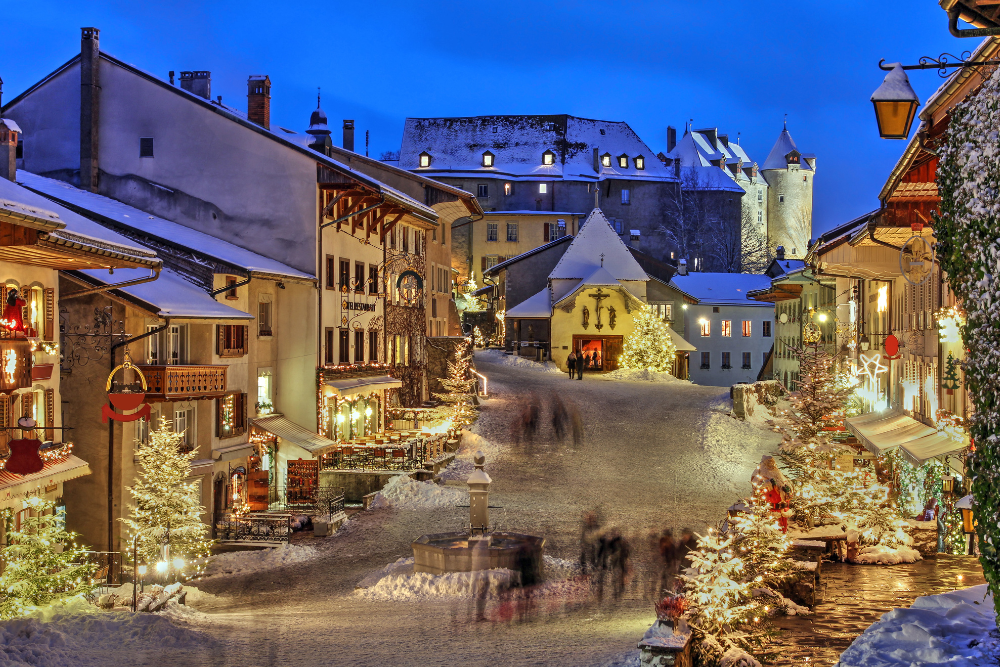Introduction
Switzerland’s traditional wooden chalets are among the country’s most recognizable architectural symbols. Nestled in alpine landscapes, these charming wooden houses with sloping roofs, decorative carvings, and flower-filled balconies have come to represent Swiss heritage and mountain culture.
Beyond their picturesque appearance, Swiss chalets have a rich history that dates back centuries. Built for functionality and resilience against harsh alpine conditions, they have evolved into both practical homes and sought-after retreats. This article explores the origins, architectural features, and cultural significance of Switzerland’s traditional wooden chalets.
The Origins of Swiss Chalets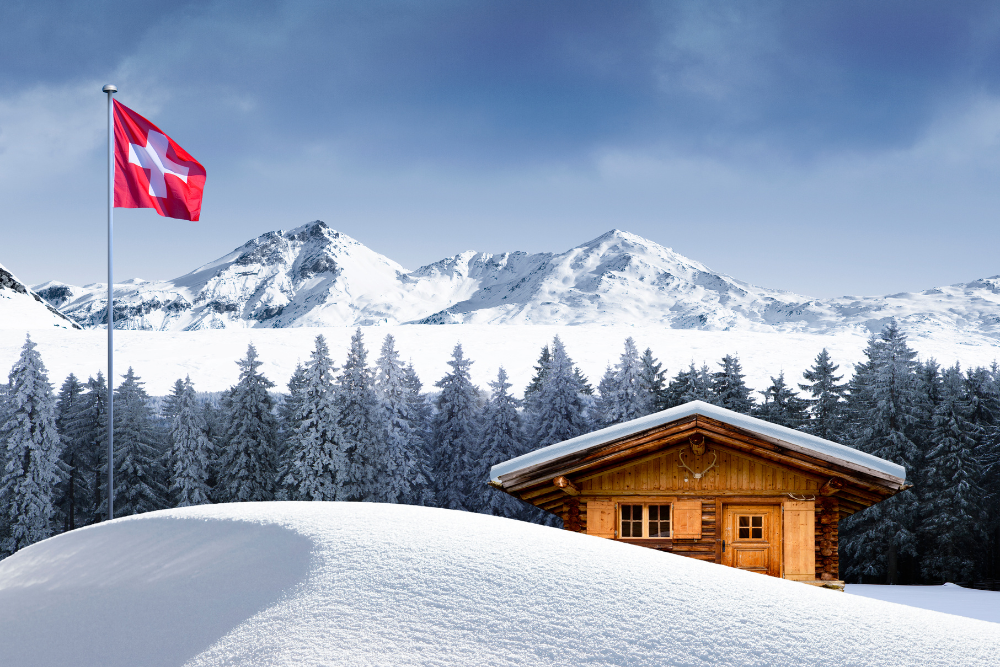
The word “chalet” comes from the Franco-Provençal language and originally referred to a shepherd’s hut used in alpine pastures. In the Middle Ages, these simple wooden structures were built by farmers who spent summers in the highlands tending to cattle.
As dairy farming flourished, chalets became essential shelters for herders producing cheese and other dairy products. Over time, these structures evolved into more permanent homes, built with durability in mind to withstand the region’s heavy snowfall and cold winters.
By the 18th and 19th centuries, as Swiss tourism began to grow, chalets gained popularity beyond their original function. Wealthy European travelers, inspired by the beauty of these wooden homes, began building chalets as holiday retreats in the Alps.
Key Architectural Features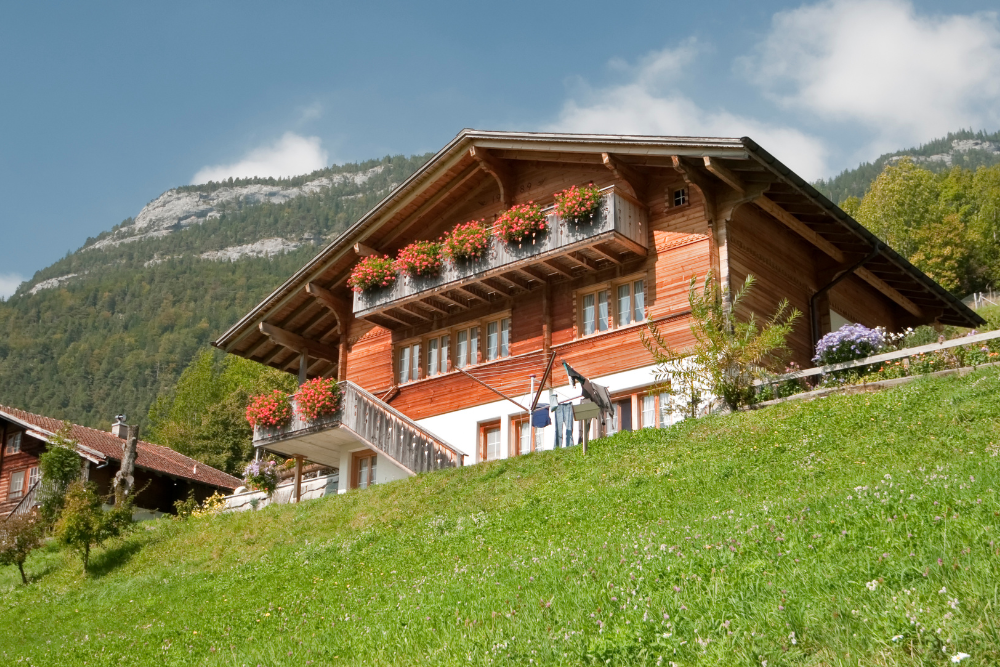
Swiss chalets are admired for their distinct wooden construction and intricate craftsmanship. Traditional chalets follow principles of functionality, sustainability, and harmony with nature.
1. Wooden Structure
Most chalets are made from local timber, such as pine, larch, or spruce, which is resistant to cold and moisture. Wood provides insulation and gives chalets their warm, rustic aesthetic.
2. Sloping Roofs
One of the most defining features of a chalet is its steeply pitched roof. This design helps snow slide off during winter, preventing excessive weight from damaging the structure.
3. Wide Overhanging Eaves
The extended roof eaves protect the chalet’s wooden walls from rain and snow, helping to preserve the structure for generations.
4. Ornate Balconies and Carvings
Many chalets feature beautifully carved balconies adorned with colorful flowers. These decorative elements reflect Swiss craftsmanship and regional artistic traditions.
5. Stone Foundations
Traditional chalets often have stone bases, providing stability on uneven mountain terrain and added protection against moisture.
The Role of Chalets in Swiss Culture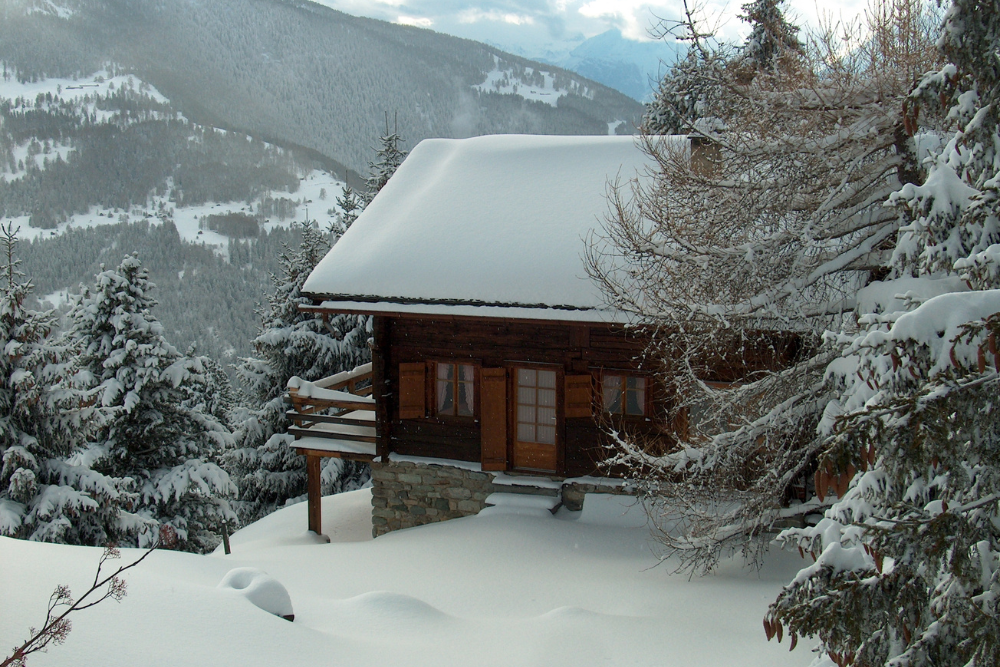
A Symbol of Alpine Tradition
Chalets have long been associated with Swiss mountain life and pastoral traditions. Historically, they served as homes for farmers, shepherds, and cheese-makers. Today, they remain a symbol of Swiss craftsmanship and rural heritage.
The Rise of Chalet Tourism
During the 19th century, Swiss chalets became popular with tourists seeking an escape to nature. The rise of alpine tourism led to the construction of grand chalets for wealthy travelers, particularly in regions like Zermatt, Gstaad, and Interlaken.
In the 20th century, the concept of the “Swiss chalet” spread globally, influencing architecture in mountain resorts from the French Alps to Canada.
Chalets as Modern Alpine Retreats
Today, Swiss chalets are used as vacation homes, ski lodges, and boutique hotels. Many retain their traditional wooden exteriors, while incorporating modern interiors with luxury amenities. Sustainable construction methods are also being applied to new chalets, blending traditional design with eco-friendly technology.
Where to See Traditional Swiss Chalets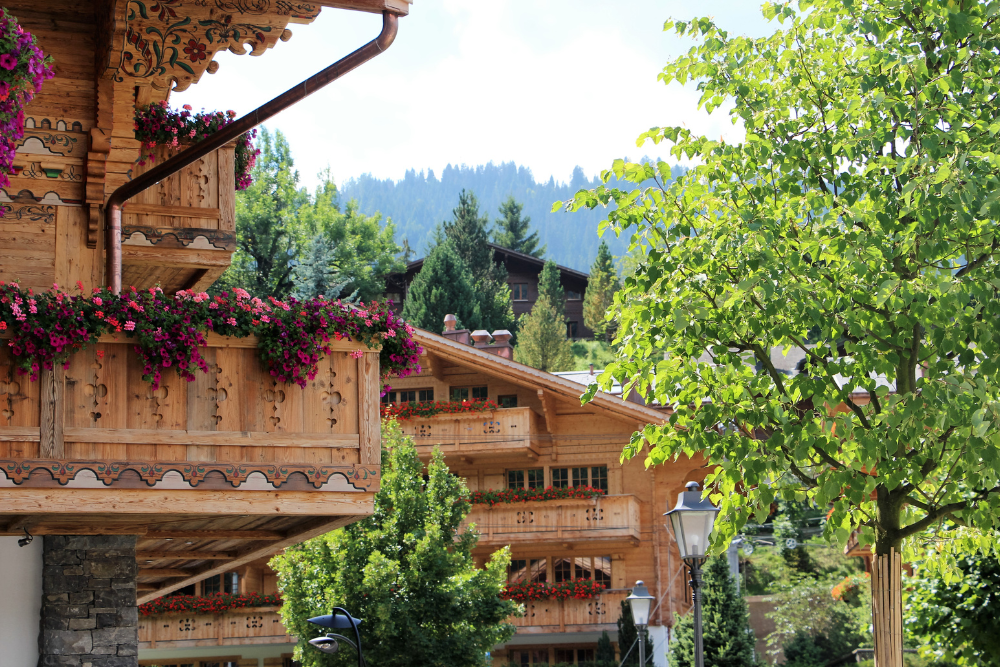
Travelers looking to admire authentic Swiss chalets can visit the following regions:
- Gstaad – A luxury alpine resort town known for its well-preserved wooden chalets.
- Grindelwald – A charming village with breathtaking views of the Eiger and traditional wooden homes.
- Zermatt – Home to historic mountain chalets and the iconic Matterhorn.
- Engadine Valley – Features chalets with unique Sgraffito decorations (etched wall art).
- Gruyères – A picturesque region famous for its medieval charm and traditional chalets.
Conclusion
Swiss wooden chalets are more than just beautiful alpine homes; they are an enduring part of the country’s architectural and cultural heritage. From their origins as shepherd shelters to their transformation into luxury retreats, chalets continue to embody the essence of Swiss craftsmanship, sustainability, and mountain living.
Whether visiting a historic village or staying in a chalet overlooking snow-capped peaks, experiencing Swiss chalets offers a glimpse into a time-honored tradition that remains deeply rooted in the country’s identity.



